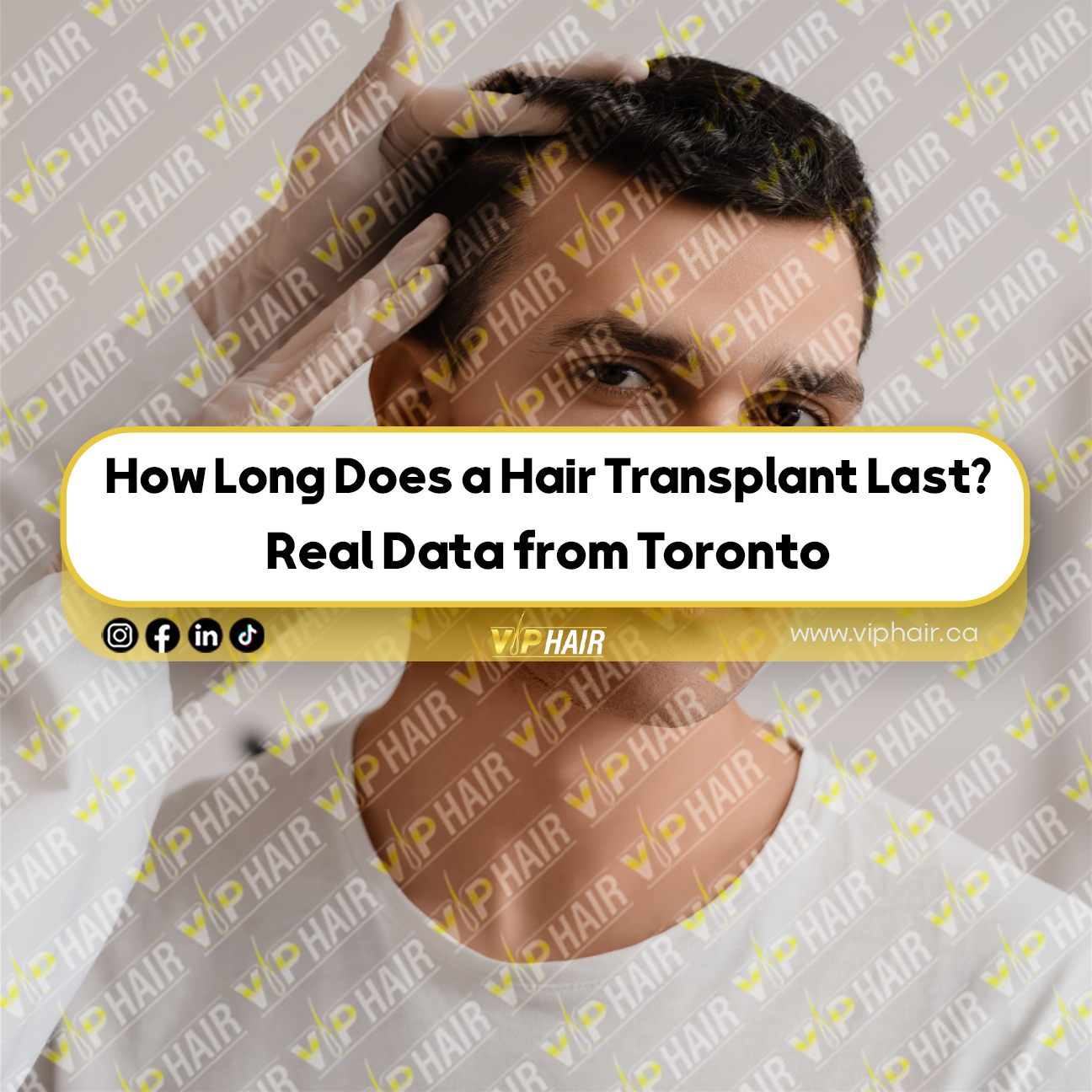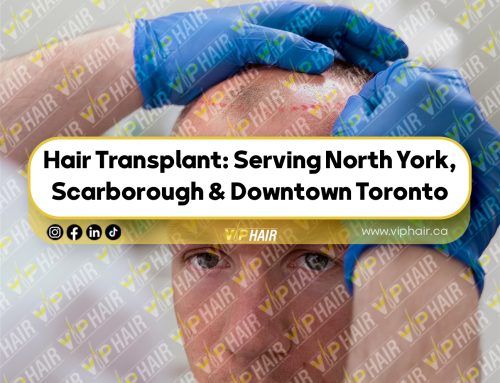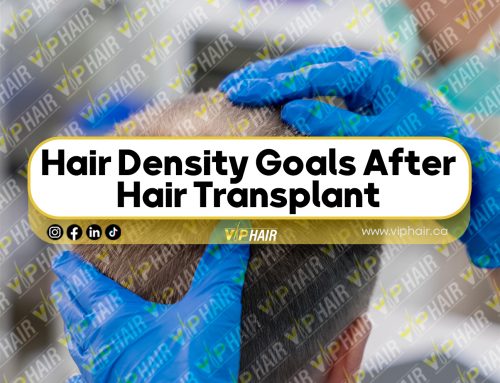If you’re considering a hair transplant in Toronto, one of the first questions that probably comes to mind is:
“Will it actually last?”
That’s a valid concern — no one wants to go through a procedure just to see the results fade away after a few years.
The good news? Hair transplants are designed to be permanent, but as with any medical procedure, there are nuances. In this article, we’re diving into real-life outcomes, scientific data, and Toronto-based experiences to help you get a realistic picture of how long your hair transplant will truly last — and what you can do to preserve it.
What Exactly Is a Hair Transplant?
Let’s start with the basics.
A hair transplant is a surgical procedure that relocates hair follicles from one part of your scalp (typically the back or sides, where hair is genetically resistant to balding) to areas where you’re thinning or balding. There are two common techniques used by Toronto clinics:
-
FUT (Follicular Unit Transplantation): A strip of scalp is removed and individual follicular units are extracted and transplanted.
-
FUE (Follicular Unit Extraction): Individual follicles are directly harvested from the donor area using tiny punch tools and placed in the recipient area.
While the method may differ, the core principle remains the same: redistributing your own healthy hair to where you need it most, for natural and lasting coverage.
Are Hair Transplants Permanent?
Yes — and here’s why.
The hair follicles used in a transplant come from areas of the scalp that are genetically resistant to DHT (dihydrotestosterone), the hormone responsible for male and female pattern baldness. When these follicles are moved to balding areas, they typically retain their resistance and continue to grow hair permanently.
So in most cases, a hair transplant lasts for life.
But — and this is important — the permanence of your transplant doesn’t mean you’ll never need maintenance. It simply means the transplanted hairs themselves are likely to stay put and grow long-term. Your non-transplanted (native) hair may still be susceptible to thinning and loss over time.
What Do Real Toronto Patients Experience?
Let’s look at the reality on the ground here in Toronto.
According to several local clinics and patient reviews, most individuals start to see noticeable growth around 4 to 6 months after the procedure. Full results typically emerge between 12 and 18 months, with hair growing naturally and integrating with the existing strands.
Now, fast forward several years:
-
Within the first 2–3 years, the vast majority of patients retain their new hair with little to no shedding.
-
By year 5, results are usually still stable, especially if the patient has followed proper aftercare and uses preventative medications if needed.
-
After 10 years, most patients report that their transplanted hair remains intact, although some choose a second procedure to address areas of natural progression in hair loss — especially in non-transplanted zones like the crown or temples.
The bottom line? Hair transplants done in reputable Toronto clinics have shown long-term stability for 10+ years in most patients.
Factors That Influence How Long Your Hair Transplant Will Last
Although the transplanted follicles are genetically resistant to balding, there are still a number of variables that affect how your results will hold up over time:
- The Skill of Your Surgeon
Perhaps the most crucial factor in the longevity of your transplant is the experience and technique of your hair transplant surgeon. A highly skilled surgeon knows how to:
-
Place follicles at the correct angle and depth
-
Distribute grafts evenly for natural density
-
Avoid damage to surrounding native follicles
-
Anticipate future hair loss patterns
In Toronto, patients who go to board-certified, specialized hair transplant clinics typically report much longer-lasting and aesthetically pleasing results.
- Type of Transplant Method Used (FUE vs FUT)
While both methods offer long-term outcomes, FUE is generally favored in Toronto for its minimally invasive nature and faster recovery. That said, FUT can offer higher graft yields for patients needing extensive coverage.
No matter the method, the quality of the grafts and their survival rate in the recipient area are what truly determine how long they’ll last.
- Post-Operative Care and Maintenance
One of the biggest determinants of success is how you care for your hair post-surgery. This includes:
-
Keeping the scalp clean and infection-free in the first few weeks
-
Avoiding strenuous activity or sweating
-
Not touching or scratching the grafts
-
Sleeping in an elevated position to reduce swelling
-
Following the exact instructions your Toronto clinic provides
Over the long term, using FDA-approved treatments like minoxidil or finasteride can slow further loss in native hair and help preserve the overall look.
- Your Age and Hair Loss Pattern
Younger patients may experience continued hair loss in untreated areas of the scalp. A good surgeon will plan ahead for this, but sometimes a second or even third procedure might be needed after several years.
In contrast, older patients with stabilized hair loss patterns often enjoy longer-lasting results from a single transplant.
- Overall Health, Diet, and Lifestyle
A healthy body promotes a healthy scalp. Factors like stress, smoking, poor diet, or hormonal imbalances can negatively impact both transplanted and existing hair.
Toronto clinics often recommend a diet rich in biotin, vitamin D, iron, and protein, alongside regular exercise and sleep, to keep your hair growing strong.
Can a Hair Transplant “Fail” Years Later?
Technically, the transplanted follicles are permanent, but external or internal factors can impact their performance over time.
Here’s what could lead to decreased longevity:
-
Inadequate blood supply to the grafted area
-
Poor placement or depth by an inexperienced surgeon
-
Autoimmune disorders or scalp conditions like alopecia areata
-
Aggressive hair styling or heat damage over the years
This is why choosing the right clinic in Toronto — with a proven track record — is so essential. A great transplant is part art, part science, and a lifetime commitment to scalp health.
Do You Ever Need a Second Hair Transplant?
In some cases, yes — but not because the first one failed.
Most second procedures are performed to:
-
Increase density in the same area
-
Cover new areas of hair loss as the patient ages
-
Blend the results more naturally over time
For example, a man in his 30s might restore his hairline with his first transplant, then return in his 40s to address thinning in the crown. This is completely normal and doesn’t mean the first transplant “wore off” — just that hair loss continued in untreated zones.
Long-Term Success Stories from Toronto Patients
Many Toronto residents who had their hair transplant 10+ years ago still enjoy the same density and natural appearance they saw in year one.
One patient, for example, shared:
“I had my FUE procedure done in 2014. It’s been over a decade, and people still don’t know I had a transplant — that’s how natural it looks. Best decision I ever made.”
Another patient, who had FUT in 2017, noted:
“After 6 years, my hair still feels strong and full. I do touch-ups with PRP therapy just to keep things healthy, but the core results are rock solid.”
Tips to Make Your Hair Transplant Last a Lifetime
Toronto specialists recommend these key strategies:
-
Use medical therapies like finasteride to prevent further native hair loss
-
Protect your scalp from UV exposure — especially during the first 6–12 months
-
Avoid harsh shampoos or frequent dyeing
-
Keep a consistent hair care routine with gentle, nourishing products
-
Do yearly checkups with your transplant clinic to monitor your scalp health
Taking a proactive approach pays off. Think of it like owning a luxury car — it’ll last a lifetime, but only if you maintain it properly.
Final Thoughts: Is a Hair Transplant Worth It Long-Term?
Absolutely — when done correctly, a hair transplant is one of the most durable and effective cosmetic procedures available.
It not only restores your hair, but also your confidence, presence, and self-image — something no temporary treatment can match.
If you’re in Toronto and considering this life-changing procedure, make sure to:
-
Do your research
-
Consult with board-certified specialists
-
Understand the long-term commitment to scalp health
A hair transplant isn’t just about today — it’s an investment in yourself, for decades to come.
Want to Explore Hair Transplant Options in Toronto?
We work with some of the most trusted hair restoration professionals in Toronto, offering consultations tailored to your needs, budget, and aesthetic goals. Whether you’re ready to book or still have questions, we’re here to support you every step of the way.
Contact us now and take the first step toward a lifetime of fuller, natural-looking hair.






Leave A Comment